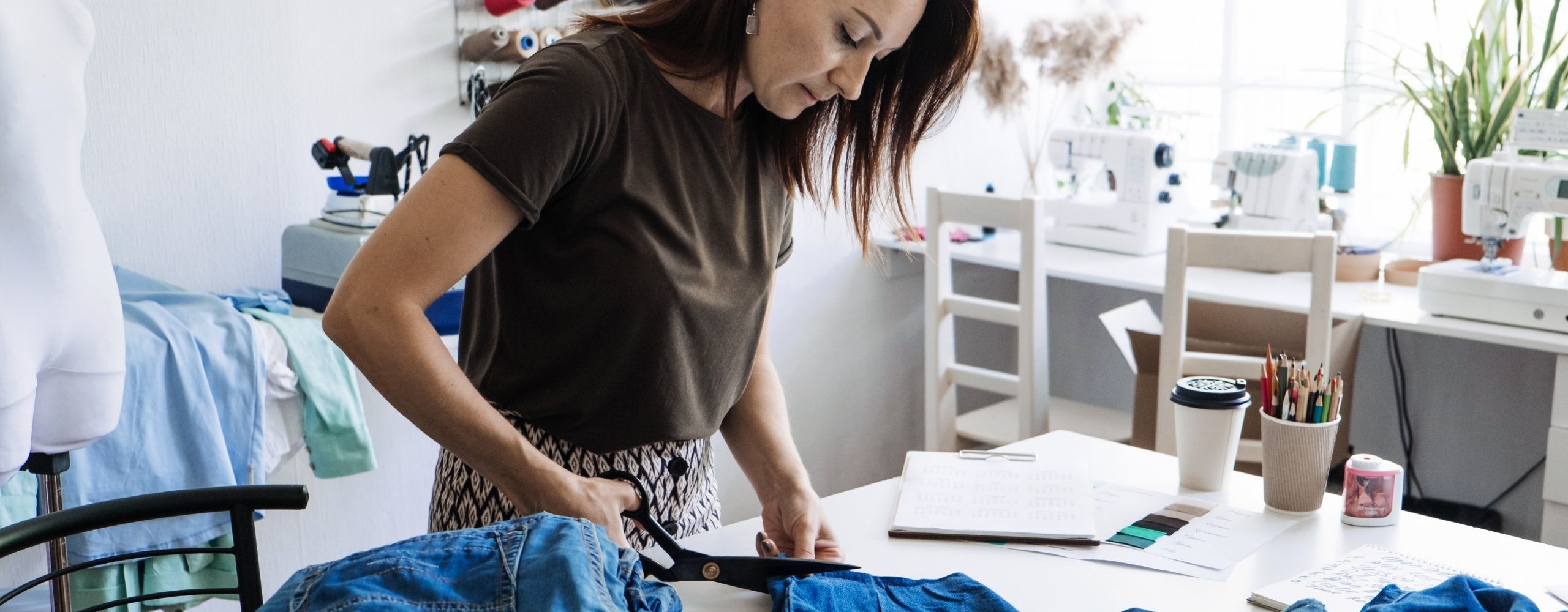How open are consumers to Circular Fashion?
Fashion – we all love it; we all live it. Add the word circular in front of it and boom, just like that, three types of consumers are born – Type A: ‘Circular fashion? Is that some new trend like polka dots?’, Type B: ‘Ah yes I know what circular fashion is but… um…’ and Type C: ‘I live and breathe circular fashion every chance I get’ people. Well, maybe that last one was a bit extreme, but you get the gist.
So what exactly is Circular Fashion?
If you related to the first type and are just as lost as I was when I first heard about Circular Fashion, fear not for I am here to guide you.
The typical life of any type of clothing designed using a linear model goes something like this: design -> mass production -> retail -> consumer purchase -> landfill. If this doesn’t seem too bad, let me take it one step further: landfill -> toxins and greenhouse emissions -> climate change -> human annihilation. You’d think the annihilation part was a joke but given that 87% of disposed clothes go to landfill and that fashion is the third largest producer of greenhouse emissions, I’d say we really aren’t too far off.
This very reason is why the fashion industry is moving towards (or in most cases, just saying that they’re moving towards – aka greenwashing) more sustainable fashion models – circular fashion being one of them. Quoting directly from the Ellen MacArthur Foundation: “A circular economy is based on the principles of designing out waste and pollution, keeping products and materials in use, and regenerating natural systems”; in fashion, this means to design products with heavy emphasis on them being designed using durable material and sustainable practices because the main idea is to promote less buying which leads to less landfill.
How does one hop on the Circular Fashion bandwagon?
Let’s be real, we’ve all been victims of spontaneous retail therapy sprees at some point of our lives. As a consumer, a good practice of circularity would be to buy clothes only when absolutely necessary – and if this is the case, considering purchasing durable timeless designs from brands that follow sustainable practices. Alternatives to this are thrift shopping – aka buying preloved clothes – and renting; with more awareness being shed on sustainability, companies like Rent the Runaway and Depop are becoming increasingly popular. Other ways to promote circularity include donating clothes or upcycling instead of discarding them.
So, if you ticked one or more of these boxes, congratulations! You were already part of the Circular Fashion club; and what happens in the Circular Fashion Club, stays in the Circular Fashion club!
What’s in Circular Fashion for consumers?
If you ask anyone into Circular Fashion why they do what they do – they will most definitely tell you it’s for the planet. Contrary to some opinions, climate change is not fake news and little practices like these could make the difference. So pro number one – being a planet-saving green God and honestly, the list could really just end right there!
Shopping vintage and renting have their fair share of perks too – first one being the money factor. Clothes are much, much cheaper and although previously used, they are usually in great condition! Renting also has the added benefit of not having a closet full of one-hit-wonders, a surprisingly common trend today.
Circular fashion is also tied to minimalism, which is great for mental health since it’s all about being mindful of what you buy and wear and keeping it simple!
Circular Fashion seems amazing, but why the sceptics?
At first glance, it’s pretty easy to think that the Type Bs are a bunch of Satan’s spawns considering how big an impact fast fashion seems to have on the environment; but, as how it usually goes, there’s more to the story. Clothes made using the circular fashion model are carefully crafted usually with organic materials and designed using environmental-friendly processes with minimal waste, making the production cost quite high. This means that these clothes will end up costing more and even though they are made to last long, there is a chance that these clothes don’t end up being the ‘it’ trend anymore.
Renting and thrifting clothes seem to also have its own set of nay-sayers – hygiene being the main concern. Although clothes are usually washed and cleaned prior to selling… the imagination… does tend to run wild. When thrifting, there’s also the case of not finding clothes in the best of shape and when you do, you find that it doesn’t seem to have the right fit.
Overall though, more and more consumers seem to be becoming aware of the ethics behind the fashion industry – and when the demand drops, so does the supply! So how open are consumers to Circular Fashion? Not nearly enough! But, if we all followed John F. Kennedy’s wise words – “One person can make a difference, and everyone should try”- just maybe we’ll get there!
References
Cartner-Morley, J. (2021, September 21). ‘Circular’ fashion: greenwashing myth, or attainable goal? Retrieved from The Guardian: https://www.theguardian.com/fashion/2021/sep/20/circular-fashion-greenwashing-myth-or-attainable-goal
Elie, K. (n.d.). 7 Tips On How To Thrift Shop Like A Bossy. Retrieved from The Good Trade: https://www.thegoodtrade.com/features/thrift-shopping-tips
Ellen MacArthur Foundation. (n.d.). Circular economy introduction. Retrieved from Ellen MacArthur Foundation: https://ellenmacarthurfoundation.org/topics/circular-economy-introduction/overview
Johnston, L. (2020, January 29). Fashion Can’t Recycle its Way Out of these Problems: Digging in on Circularity. Retrieved from Sourcing Journal: https://sourcingjournal.com/topics/sustainability/circularity-sustainability-apparel-footwear-fashion-rentals-190754/
The Honest Consumer. (2021, May 24). What is Ciruclar Fashion? The Future of Sustainable Style. Retrieved from The Honest Consumer: https://www.thehonestconsumer.com/blog/circular-fashion-and-sustainability


